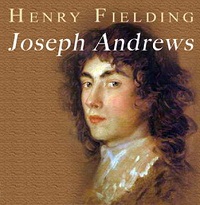
Answer: Joseph Andrews can’t be called a regular picaresque novel for Fielding employs elements of this tradition in an exposition of his own theory of the Ridiculous. He was writing a “comic epic-poem in pose”. He adapts the picaresque tradition to his own theory of the novel, which shows the influence of various other literary forms besides the picaresque.
However, the picaresque motif helps Fielding to fulfill his aim of ridiculing the affectations of human beings. The different strata of society can be represented through the picaresque mode. The travelers meet squires, innkeepers, landladies, persons, philosophers, lawyers and surgeons, beggars, pedlars and robbers and rogues. Particular social evils prevalent in the day, and follies and foibles of human nature in general are effectively exposed. Fielding’s satire is pungent as he presents the worldly and crafty priests and the callous, vicious and inhuman country squires. Malice, selfishness, vanities, hypocrisies, lack of charity, all are ridiculed as human follies.
The picaresque tradition belongs to Spain and derived from the word “picaro”, meaning a rogue or a villain. The picaresque originally involved the misadventure of the rogue-hero, mainly on the highway. Soon, however, the rogue was replaced by a conventional hero – gallant and chivalric. The comic element lay in the nature of the hero’s adventures, through which, generally, society was satirized.
The Picaresque novel is the loosest in plot – the hero is literally let loose on the high road for his adventures. The writer got the opportunity to introduce a large variety of characters and events. The hero wanders from place to place encountering thieves an drogues, rescuing damsels in distress, fighting duels, falling in love, being thrown in prison, and meeting a vast section of society. The opportunity of representing a large section of society gave the author the power of exploring the follies of the widest possible range of humanity. As the hero meets a gamut of characters from the country squire to the haughty aristocrat, from hypocrite to ill-tempered soldiers, the writer is able to introduce with the least possible incongruity, the saint and the sinner, the virtuous and the vicious. The writer has a chance to present the life, culture and morality prevalent in his time, and to satirize the evils.
Fielding acknowledged his debt to Cervantes, whose Don Quixote is the best known picaresque novel in Spanish.
Like the Don and Sancho Panza, Parson Adams and Joseph set out on a journey which involves them in a series of adventures, some of them burlesque, at several country inns or rural houses. Like the Don, Parson Adams is a dreamy idealist. But there are differences, too, between Joseph Andrews and the picaresque tradition, vital enough to consider Fielding’s novel as belonging to the genre of its own.
The central journey in Joseph Andrews is not mainly a quest for adventure as it is in the picaresque tradition. It is a sober return journey homewards. Joseph and Lady Booby are taken to London and the reader is given a glimpse of society’s ways in that great city.
It is in Chapter 10 of Book I that the picaresque element enters the novel, with Joseph setting out in a borrowed coat towards home. The picaresque tradition is maintained uptil the end of Book III. Joseph meets with the first misadventure when he is set upon by robbers, beaten, stripped and thrown unconscious into a ditch. A passing stagecoach and its passengers very reluctantly convey Joseph to an inn. The incident gives ample scope to Fielding for satirizing the pretenses and affectations of an essentially inhuman society.
The Tow-wouse Inn provides a grim picture of callous human beings – the vain and ignorant surgeon and the drinking parson. Once again kindness and generosity come from an apparently immoral girl, Betty the chambermaid. With the arrival of Parson Adams, the picaresque journey takes on a more humorous tone, with plenty of farce. The encounter with the “Patriot” who would like to see all cowards banged but who turns tail at the first sight of danger, leads to the meeting with Fanny. She is rescued by Adams in proper picaresque-romance style with hero. Several odd characters are met on the way – such as the hunting squire – the squire who makes generous but false promises. Then comes the abduction of Fanny – and the reintroduction of something more serious.
We also have the interpolated stories, which belong to the picaresque tradition. In his use of this device, Fielding shows how far he has come from the picaresque school.
To conclude, Joseph Andrews has a rather rambling and discursive narrative, which makes us to believe that it is a picaresque novel. But, on the whole, it is not a picaresque novel rather the picaresque mode has helped him in the development of his comic theory – that of ridiculing the affectations of human beings.



